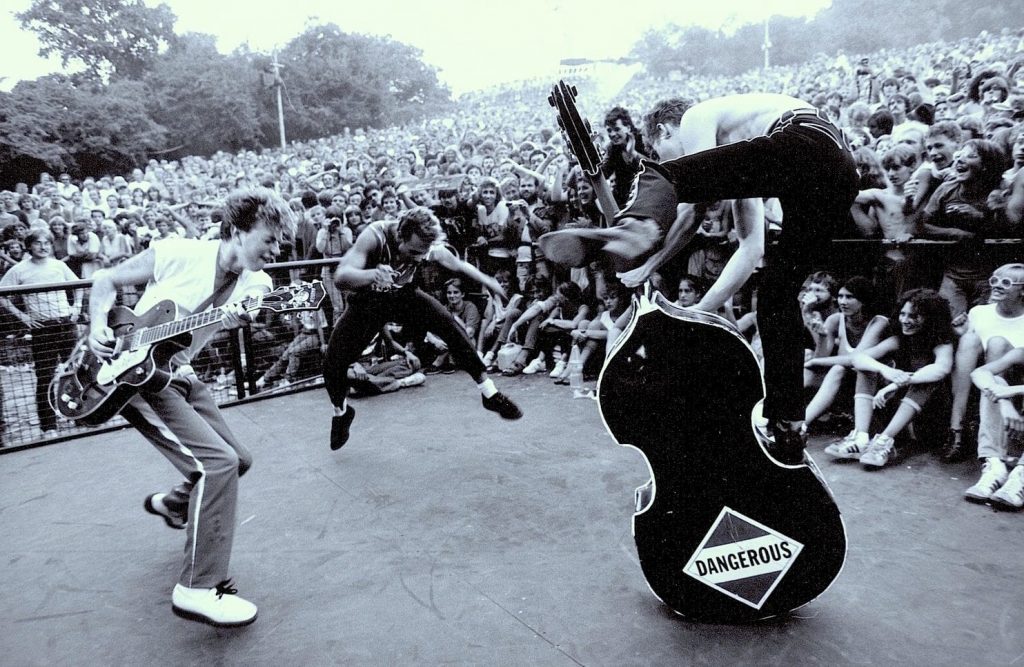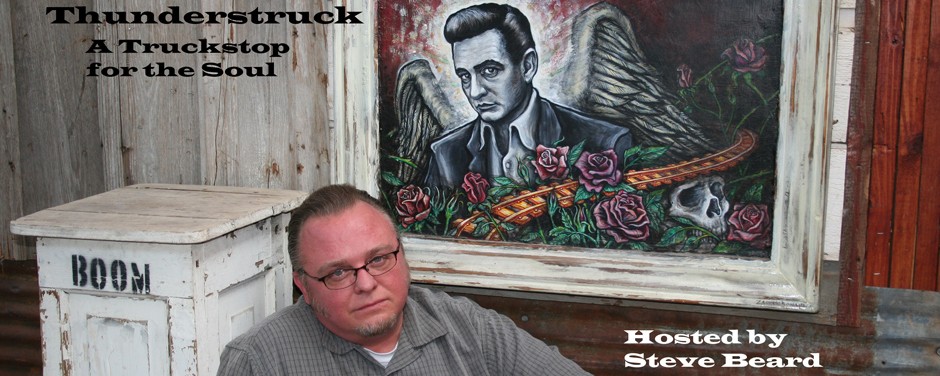
The Stray Cats playing their hit “(She’s) Sexy & 17” at the Rockpalast Festival in Germany in 1983. From left: Setzer, a fan onstage and Rocker. (Manfred Becker)
“If you weren’t around, it may be hard to understand the rise of the Stray Cats,” writes Geoff Edgers for the Washington Post. “It’s as if they appeared from outer space, or at least a Pomade-speared time machine packed with hot rods, tattoos and Eddie Cochran licks. That a rockabilly trio could top the MTV stable in 1982, the same 1982 stuffed with leg warmers, Members Only jackets and synthesizers, would seem not merely unlikely, but impossible.”
Amen to that. Nothing but deep gratitude and respect for these guys. First saw them at the Hollywood Palladium on August 21, 1982 — a night tattooed in my greaser soul. It flipped my world upside down.
“One way to start explaining the Stray Cats is with a photo. It was snapped as they played their hit “(She’s) Sexy & 17” at the huge Rockpalast Festival in Germany in 1983,” writes Edgers. “The image, black-and-white and blurry in spots, features Setzer, the singer and leader, swinging his Gretsch, eyes closed, air between his white shoes and the ground below. Rocker isn’t wearing a shirt and has his back to camera, suspended in the air as he balances one boot on a stand-up bass adorned with the word ‘Dangerous.’ Phantom is out of the frame but we know what he’s up to. He’s standing — the drummer always stood — pounding his snare like Joe Frazier on the heavy bag.”
Slim Jim Phantom (James McDonnell) loved music, “whether the Beatles or the Stones. But as he got older, he started noticing the song credits. That Aerosmith adapted ’50s rocker Johnny Burnette’s ‘Train Kept a-Rollin’ ‘ and that the Beatles played a killer version of Carl Perkins’s ‘Honey, Don’t.’ Humble Pie did Cochran’s ‘C’mon Everybody.’
“Lee and I had always played,” Phantom says. “We had some older guys that we played with, and we knew all the blues and Jimmy Reed and those kinds of songs. But at the same time, we were trying to find something that was a little bit different.”
“Enter Brian Setzer. He was two years older and had been taking guitar lessons since he was 8. By his 16th birthday, Setzer already had the look. He could play the guitar better than anybody they knew. He could also write music. … Sometime in the mid-’70s, Setzer heard Gene Vincent’s “Be-Bop-a-Lula” playing on a jukebox at CBGB, a punk rock club in New York. That got him hooked on the music that had emerged in the 1950s by loosely combining R&B and the raw energy of hillbilly music.”
After their meteoric success, the Stray Cats broke up. “Put it in this order,” Setzer told Edgers. “Youth, success, separation, alcohol. All of that. I don’t really need to get into it.”
“I think the bigger picture really has come into focus,” says Phantom. “If we scrutinize it, the why will become we love this music. We’re still the torchbearers for Eddie Cochran.”
